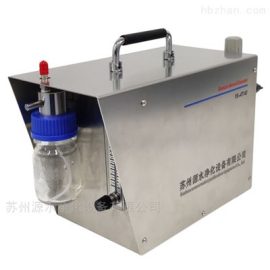10 Essential Anemometer Uses: From Weather Forecasting to Wind Energy
10 Essential Anemometer Uses: From Weather Forecasting to Wind Energy
Anemometers are versatile instruments essential for measuring wind speed and direction. Their anemometer uses span numerous industries, from meteorology to renewable energy. Understanding these applications highlights the tool’s importance in daily operations and large-scale projects.
Weather Forecasting and Meteorological Studies
Accurate weather prediction relies heavily on anemometers. These devices provide real-time data on wind patterns, helping meteorologists issue timely warnings for storms, hurricanes, and other severe conditions.
Wind Energy Production
In the renewable energy sector, anemometers are critical for assessing wind farm viability. They measure wind resources to optimize turbine placement and maximize electricity generation efficiently.
Aviation and Maritime Safety
Pilots and ship captains use anemometers to monitor wind conditions, ensuring safe takeoffs, landings, and voyages. Accurate readings help prevent accidents caused by sudden wind shifts.
Agricultural Management
Farmers utilize anemometers to monitor wind impact on crops, manage pesticide spraying, and prevent soil erosion. This data supports sustainable farming practices and higher yields.
Construction and Engineering
In construction, anemometers ensure worker safety by detecting high winds that could endanger crane operations or structural integrity. Engineers also use them to design wind-resistant buildings.
Environmental Research
Scientists deploy anemometers to study climate change, air pollution dispersion, and ecological impacts. Long-term wind data contributes to vital environmental protection strategies.
Sports and Recreation
From sailing to skydiving, anemometers help enthusiasts gauge wind conditions for optimal performance and safety. They’re also used in competitive sports like kite surfing and paragliding.
Industrial Ventilation Systems
Factories use anemometers to monitor airflow in ventilation systems, maintaining air quality and compliance with health standards. Proper ventilation reduces hazardous fume accumulation.
Firefighting and Emergency Response
Firefighters rely on anemometers to predict wildfire spread and plan evacuation routes. Wind data is crucial for containing blazes and protecting communities.
Educational Purposes
Anemometers serve as practical teaching tools in schools and universities, helping students grasp aerodynamics, meteorology, and environmental science through hands-on experiments.
Frequently Asked Questions
How does an anemometer work?
Most anemometers operate using rotating cups or ultrasonic sensors to calculate wind speed based on rotational velocity or sound wave travel time.
Can anemometers measure wind direction?
Yes, many modern anemometers include wind vanes or ultrasonic sensors to provide comprehensive wind direction and speed data.
What are the main types of anemometers?
Common types include cup, vane, hot-wire, and ultrasonic anemometers, each suited for specific accuracy and environmental needs.
Ready to Optimize Your Wind Measurements?
Explore premium anemometers tailored to your needs. Contact us today for expert recommendations and enhance your data accuracy!


